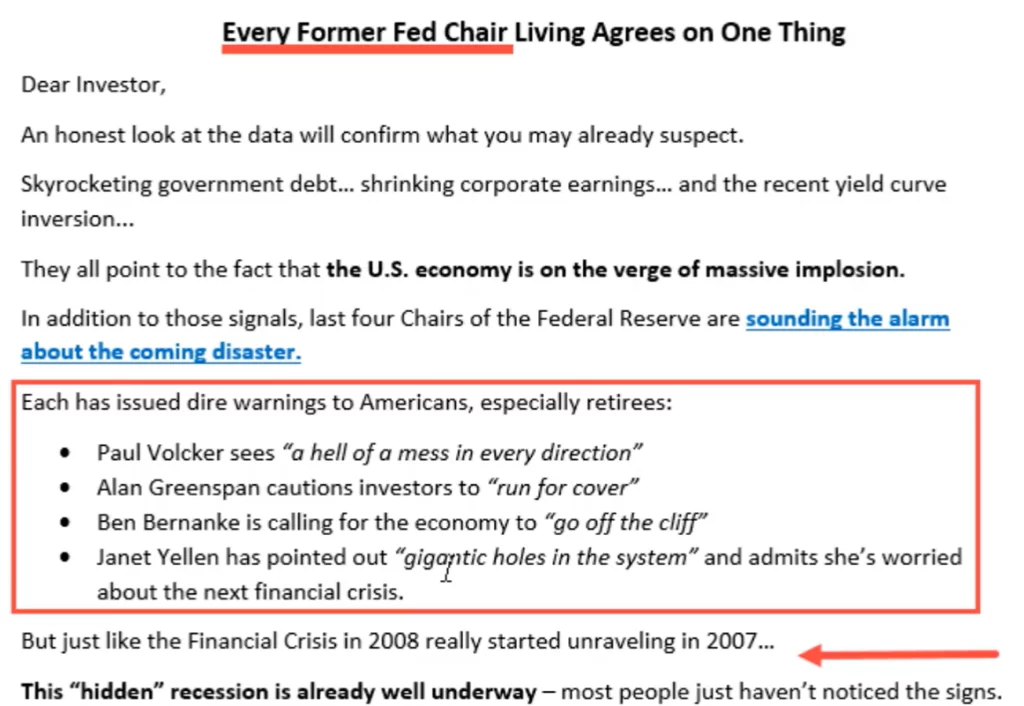Are your emails boring? How do you know?
If you’re even a little nervous that your subscribers yawn when they get your messages, you’re going to like what we’re talking about today.
If you’re confident your emails are interesting and you’d like to crank up your must-read rating to an even higher level, this will be good for you, too.
I’m going to show you one of the best emails I’ve ever written.
It’s from a few years back, but you can’t help but learn something from this beauty.
And if you’re writing financial copy, there’s no reason you couldn’t use something like this right now.
Here we go.

(Eeesh! I just spotted a typo. Hilarious.)
Quickly, there are 3 main ideas you can take from this:
1. This email is essentially one big pile of PROOF.
Four high-caliber economic experts are all saying the same thing at the same time.
A large percentage of emails make claims and just expect readers to believe them.
Another sizeable percentage of emails make claims and explain them… but don’t offer actual proof.
Now, proof doesn’t automatically make copy interesting.
But overwhelming proof creates a forceful argument that’s hard to ignore (even if it’s unpleasant).
2. There’s a hint of conspiracy at play.
If all the former Fed chairs are talking about recession, why is the current chairman sweeping it under the rug?
And why is no one else talking about this? And why isn’t the current Fed chair Bazooka Jay Powell addressing it?
When your emails evoke meaningful questions in your reader’s mind, you give him reason to keep reading, clicking, and even buying.
And when you regularly create that experience for readers, they give you endless opportunities to sell them.
By the way, it’s worth pointing out that ANYONE could have written this email. The quotes are in the public record. Zero claims are made about the company sending the email.
So when people ask, “how do I sell my services when I don’t have much or any experience.” This is a decent place you can start.
3. It oozes urgency.
The danger this email talks about is just around the corner. You can’t really afford to think about this later. It demands immediate action.
Investors don’t want to get crushed, so they’ll pay attention and consider taking the action recommended.
Your emails are most effective when you address an urgent opportunity or danger. If your reader can push off a decision until later, he will.
You can’t always control that. Still, I encourage you to make every effort to add urgency to the ideas you share in your emails.
During my guest appearance on The Financial Rebel Show, this email came up:
Of course…
No one knows how brilliant and urgent your copy is until they open the email.
In my book Subject Line Science, I share 11 “made you look” secrets and dozens of examples to help you entice more subscribers to open you emails – and open in the right frame of mind to take action.
Worth checking out if you’d like to write hard-to-ignore emails.
(The “made you look” secrets also work for social media, video hooks and other places you need to grab attention.)


